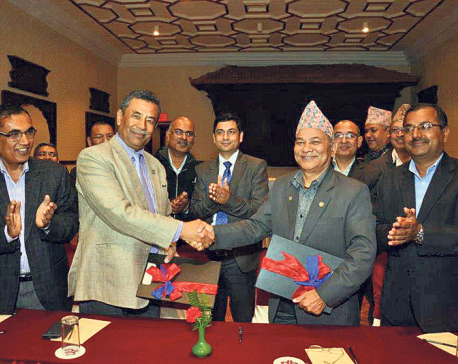
OR
Subsidized loan scheme fails to pick up
Published On: April 18, 2019 08:14 AM NPT By: Republica | @RepublicaNepal
KATHMANDU, April 18: Though it has been nearly six months that the government introduced concessional loan scheme for various groups, including workers returning from foreign employment, women entrepreneurs and people from the ‘Dalit’ community, the total amount of loans floated by bank and financial institutions (BFIs) except certain agro and livestock business is paltry.
According to the latest data of Nepal Rastra Bank (NRB), BFIs have extended a total of Rs 51.4 million in loans under these five different types of concessional loan schemes introduced through the budget for the current fiscal year. The schemes came into operation in September last year.
However, the amount of loans floated under this scheme indicates that the targeted groups have not benefitted much from the government’s facility.
Under the scheme, the government subsidizes certain percent of the interest costs.
Many attribute reluctance of BFIs to float loans under these schemes to low disbursement of cheaper credits to the targeted groups. While flow of concessional loans to sector like agro and poultry has been high, the government’s aim to increase access to cheaper credit for other targeted groups has so fallen flat so far.
According to the government data, a total of Rs 23.41billion loan extended by BFIs has been outstanding and Rs 982.2 million interest subsidy has been provided to 14,113 borrowers under the lending scheme for selected agriculture and livestock business.
Since this is the scheme that is in operation for two years, the number of takers of subsidized loans under this category is also high.
Other categories include Rs 700,000 loan for educated self-employment youth, Rs 1 million for business projects promoted by returnee migrant workers, Rs 1.5 million for women enterprise and Rs 1 million for business promoted by members of ‘Dalit’ community. Earthquake survivors (up to Rs 300,000 to rebuild their houses) and youths (up to Rs 500,000 for higher, technical or entrepreneurship education) can also borrow from BFIs at subsidized interest rates.
The government bears five percentage points of interest rate on these loans, while the interest subsidy for loans for women enterprises is 6 percentage points. That means if loan is floated at 13 percent to a woman entrepreneur, the government will bear 6 percent interest while the remaining 7 percent will have to be paid by the borrower.
“The disbursement figure is not encouraging except for the agro and livestock business loans. It looks like BFIs have not floated loans spontaneously,” Narayan Paudel, an executive director at the Nepal Rastra Bank (NRB), told Republica. “They point out lack of strong collateral in other types of loans under this scheme as a reason for their reluctance,” he added.
While the central bank has told BFIs to float loans under this scheme against the collateral of businesses or projects of borrowers, BFIs are wary of quality of such collateral.
Concerned by the lack of interest of BFIs to float these loans, the central bank recently instructed them to set an annual lending target under this scheme and facilitate loan disbursement from all their branch offices.
Low margin on interest rates is also not encouraging BFIs much to facilitate loans under these schemes, according to bankers. The central bank does not BFIs to charge more than two percentage points premium on their base rate for interest on these loans.
“That margin is often not enough to meet administrative and other expenses accrued in the processing and disbursement of such loans,” said a banker, requesting anonymity.
However, NRB’s Paudel said that banks should not deal these loans solely to generate profit. “Banks also have to see it as corporate social responsibility. Also, we have provided them some incentives to float loans under these schemes,” he said referring to a recent regulatory relief provided to deduct 50 percent of these loans in credit to core capital plus deposit ratio.
You May Like This

Mega Bank, with Tourism Dev Bank complete merger
KATHMANDU, May 13: Mega Bank and Tourism Development Bank have successfully completed their merger process and started their joint operation... Read More...

NMB Bank awarded 'Bank of the Year 2017'
KATHMANDU, Dec 4: NMB Bank has been awarded the 'Bank of the Year 2017' by the Financial Times, London. Issuing... Read More...

Janata Bank, Tribeni Bikas Bank sign merger pact
KATHMANDU, Nov 8: Janata Bank Nepal Ltd and Triveni Bikas Bank Ltd have signed a memorandum of understanding (MoU) for... Read More...




Just In
- Health ministry to conduct ‘search and vaccinate’ campaign on May 13
- Indian customs releases trucks carrying Nepali tea, halted across Kakarbhitta
- Silent period for by-election to begin from midnight
- SC issues short-term interim order to govt and TU not to take immediate action against TU legal advisor Khanal
- National consultation workshop advocates to scale up nutrition smart community in Nepal
- Patan High Court issues short-term interim order to halt selection process of NTB’s CEO
- NEPSE inches up 0.15 points; daily turnover increases to Rs 2.53 billion
- Bagmati Govt mandates tri-lingual signboards in offices














Leave A Comment